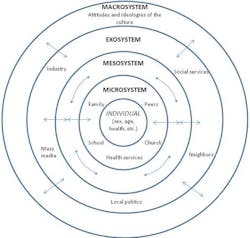2015 Dietary Guidelines Advisory Committee proposes new recommendations
According to the press release and Secretaries Burwell and Vilsack in a joint statement, “now that the advisory committee has completed its recommendations, HHS and USDA will review this advisory report, along with comments from the public—including other experts—and input from other federal agencies as we begin the process of updating the guidelines.” (1) The full report is 571 pages! The report highlights serious diet-related health issues, such as preventable chronic diseases. Many are related to poor dietary habits and physical inactivity. Type 2 diabetes, cardiovascular diseases, obesity, hypertension, and diet-related cancers are mentioned. These diseases and conditions increase morbidity and mortality, and increase health care costs.
Dietary patterns, food and nutrients, and health outcomes were all considered for these recommendations. Vegetables and fruits were the only features of the diet that were regularly acknowledged in every conclusion statement across the health outcomes. (2) Higher consumption of red and processed meat was identified as harmful. There is moderate to strong evidence in the conclusions that high consumption of sweetened foods and beverages and refined grains is detrimental to one’s health. Moderate intake of alcohol by most adults could be seen as a component of a healthy diet. There are some warnings and disclaimers about alcohol that need to be considered. (2)
The report emphasizes that behavior change is at the heart of the matter, using the social-ecological model where the individual is at the core of the change. Two key concepts of this model are:
- Multiple levels: Behavior affects and is affected by multiple levels of influence.
- Reciprocal causation: Individual behaviors shapes, and is shaped by, the social environment. (2)
For examples of how this model is used to change behavior regarding health issues, visit the website.
In the meantime, we have the Dietary Guidelines from 2010. Read the new recommendations, and make comments!
References
1. 2015 Dietary Guidelines Advisory Committee submits report. United States Health and Human Services website. http://www.hhs.gov/news/press/2015pres/02/20150219b.html. Published February 19, 2015. Accessed March 4, 2015.
2. Winch P. Ecological models and multilevel interventions. John Hopkins Bloomberg School of Public Health. http://ocw.jhsph.edu/courses/healthbehaviorchange/PDFs/C14_2011.pdf. Accessed March 4, 2015.



